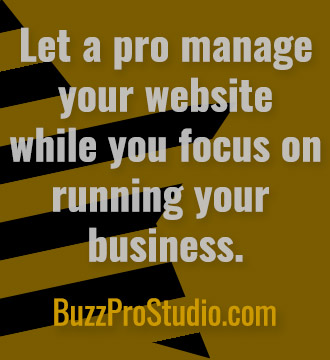There are many different marketing strategies that a small business can employ online: blogging, social media, and ads are just a few examples. But one of the most powerful (and often overlooked) marketing strategies is email marketing, which involves using email outreach to share your business offerings with existing and prospective customers.
The roots of email marketing can be found in old-fashioned marketing via snail mail — yes, all that junk mail that clogs your mailbox on a daily basis. But email marketing offers several advantages over snail-mail marketing and other marketing efforts: first and foremost, it costs a lot less to send out emails than traditional mail. Emails can be tracked, so you can see who read the message, who clicked on it, and how many recipients took action in response to your email. It also offers an opt-in feature, which allows potential customers to sign up or sign off from receiving your messages, resulting in a pool of willing recipients who want to receive your marketing messages.
What About Spam?
Spam could be considered a type of email marketing, but spam is unsolicited and therefore unwanted. It’s often used to garner illicit or nefarious business transactions ranging from ad clicks to hacking (malware) endeavors.
We’ve all opened our email only to find it bombarded with spam — garbage emails that we don’t want or need. Email marketing is different from spam, primarily because it’s based on ethical marketing and business practices.
There are also nefarious practices in list-building, such as scraping the web to collect random email address, a practice that is most commonly used by spammers and unethical practitioners. Ethical list-building only uses willing participants.
Email Marketing: The Process
Here are the basic steps involved in email marketing:
- Choose a provider. If you’re starting super small, you might be able to manage your list on your own. But most service providers will let you start out on a free plan. As you increase your number of subscribers or use more advanced features, you’ll start to incur charges.
- Build a list of recipients. This can be done by offering an opt-in form on your website; many websites use a pop-up to encourage visitors to sign up. In some cases, you might use a shared or purchased list, although such lists should be used with caution. You can also add subscribers to your list when you collect their email addresses during a purchase or some other action. The goal is to collect addresses of people who are a match to your business — people who want to receive updates, notifications, and special offers from you. You can offer goodies to potential subscribers to entice them: some examples include a free e-book or a discount code. Your list should always allow users to unsubscribe.
- Develop a campaign. The email marketing campaign should be carefully designed, customized to both the target audience and your business offerings. It might be as simple as sending a weekly blog post to subscribers, or it could be a complex series of emails that walk recipients through various steps. Make sure you’ve set a clear and achievable goal, which usually culminates with some kind of purchase.
- Run the campaign. Perhaps the first year, you send quarterly newsletters that are designed to boost your credibility and make subscribers feel connected to your business and its offerings. In the second year, you can include semi-annual discounts. Eventually, you can send announcements about new and existing products. Keep your products and services in front of your customers and offer occasional specials to make it worth their while.
- Develop your lists. Over time, you might want to break your list into segments. If you run a bookstore, you might have a segment for sci-fans and another for romance readers. Look for new ways to grow your lists.
- Expand and fine-tune your campaigns: Continue to tweak your campaigns so your content doesn’t grow stale.
Why Is It So Effective?
Email marketing is effective, because when it’s done right, you’re reaching out to people who’ve told you they’re interested in your offerings. That’s why it’s a great way to build customer loyalty. You won’t need to rely as much on other costly marketing efforts like sales and advertising. Email marketing puts your customers a click away.
Buzz Pro Studio provides website services to small businesses and independent professionals, specializing in website design and maintenance. For more information or to get a no-obligation quote, contact me.
Melissa Donovan is the founder of Buzz Pro Studio, providing website services to small businesses and independent professionals.


